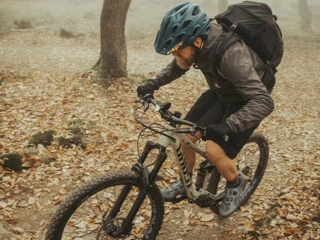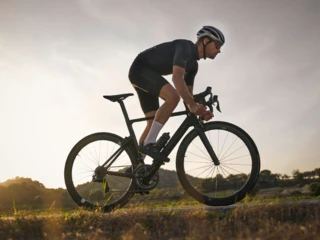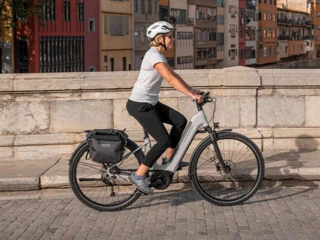Finding the Right Bicycle Tube Sizes for Your Tire Size – and More
Veröffentlicht am
If your tire is flat, you need a new tube. We explain how to find the right bicycle tube sizes and specifications for your tire size.

Practically every cyclist has had a flat tire at some point. Often, the tube can still be patched, but if it is too old or the damage is too great, there is no other option – a new tube is needed. If you have little experience in changing bicycle tires, the selection of available tubes can be somewhat confusing.
We provide you with an overview and explain which tube size, valve, and material are best suited for which type of bicycle and riding style.
The Correct Tube Size for Your Bicycle
You essentially need two size specifications to find the correct tube size. The size of your bicycle tire is determined by the wheel size/diameter (usually given in inches) and the tire width in millimeters.
Additionally, you should also consider your riding style. For a city bike, puncture resistance is much more important than the weight of the tube or rolling resistance. For a road bike, where every gram counts, the situation is quite different. AERON/TPU Airtubes has developed dedicated TPU tubes for every purpose, offering you the best solution for your bicycle type.
Back to size: You can find the correct size/diameter of your wheel, or rather the tire, on the sidewall of the tire, where the tire width and inner diameter are printed in millimeters according to the ETRTO standard – for example, 57-622. On the packaging of the bicycle tubes themselves, you will usually find the rim size as well as the smallest and largest tire width that the tube fits. This information is related to the properties of tubes: Depending on how much you inflate them, they fit different tire diameters. But knowing the pure size of the tube is not enough.
The Right Valve for My Bicycle
It is important that your tube has a suitable bicycle valve, as there are different valve sizes that may not fit through the rim hole. The following three types are available:
- Dunlop (DV), also known as bicycle or Blitz valve. This variant is mainly found on older bikes, or on children's, trekking, and city bikes. In recent years, the Sclaverand valve (see below) has become more common on almost all bikes compared to the Dunlop valve.
- Sclaverand (SV), also known as French or Presta valve. This is the standard, a compact and very user-friendly valve that holds air well in the tire and is still easy to inflate. All size AERON/TPU Airtubes are available with a Sclaverand / Presta valve, and our city/touring tubes are also available with Schrader valves (see below). The Sclaverand or Presta valve type of valve fits through any rim hole.
- Schrader (AV), also known as car valve. The Schrader valve is mainly found on city bikes and older mountain bikes. This valve system, originating from the automotive industry, has the advantage that you can inflate it at any gas/service station using the air pressure inflator for cars, and it is also very stable. If you are considering Schrader valves, you should make sure that your rim hole is large enough, as these valves have a larger diameter than the thinner Sclaverand / Presta valves.
You should also pay attention to choosing the correct valve length, especially with deep profile carbon road bike rims. This depends on the rim depth.
You can determine the valve length you need from the following size table:
| Rim Depth | Valve Length |
| 35 mm | 55 mm |
| 40 mm | 55 mm |
| 45 mm | 60 mm |
| 50 mm | 60-70 mm |
| 55 mm | 70-80 mm |
| 86 mm | 110 mm |
The Right Material for Your Bicycle Tube
Finally, the choice of tube material remains, as the right size is only useful if the tube also meets your requirements. There are three variants:
- Butyl Rubber: The classic black bicycle tubes are made of butyl and have been on the market for many years. Air permeability and puncture resistance are adequate, but butyl tubes are very heavy and therefore have the highest rolling resistance of all materials.
- Latex: Latex tubes were long popular among ambitious road cyclists. They have low rolling resistance. However, this advantage comes with a few disadvantages: Latex tubes are delicate, making installation quite cumbersome, and even small damage to the rim tape can quickly lead to punctures. They also hold air significantly worse than any other tube, requiring frequent re-inflation.
- Thermoplastic Polyurethane (TPU): TPU tubes combine the best of all materials. They are lighter than latex and offer a smaller packed size, better rolling resistance, and higher puncture resistance than butyl. Due to different layering, TPU tubes are purposely designed for their riding application. There is a suitable product for extreme road performance as well as for rough MTB or gravel rides. Thermoplastic is not only light but also easy to patch and 100% recyclable, making these tubes the perfect cycling necessity.
Now you know everything you need for choosing the right tube size for your bicycle. We wish you a safe and puncture-free ride!



